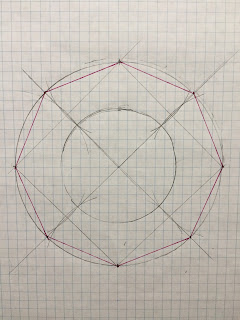How I got started

After going through enough commencement and graduation ceremonies in a rented gown, hood, and cap & hating the cheesy quality (like wearing a glorified dry cleaner bag), I started to think that I’d like to have my own, in decent quality fabric. After finding it costs circa $1000 for a decent set, I decided to investigate what it would take to make a set of my own (as a diversion as well a cost-saving/quality enhancing exercise). At first I thought about the gown, and learned a lot from a blogger who constructed her own PhD robe (not cap and hood) in 2008. Starting with a Butterick pattern 5626 (church/choir robe) and altering it (single pleat in front instead of gathers, adding velvet collar and trim around front opening, and adjusting sleeves to puff around a shorter lining, cartridge pleating instead of gathering) as well as adding chevrons and piping per her alma mater’s design, she ended up with a very impressive reproduction of her school’s official robes, ...






